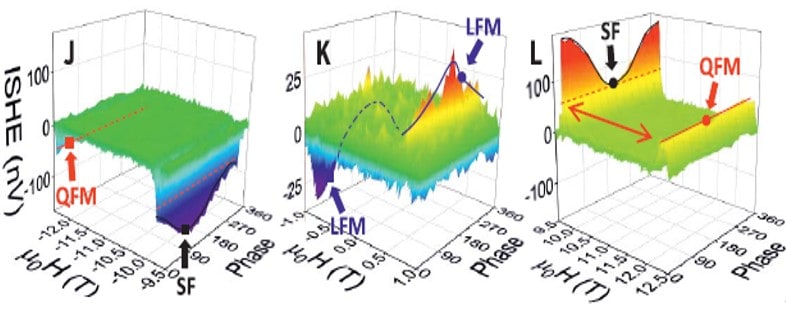
This is an effort within an AFOSR MURI Team that brings together complementary expertise of seven principle investigators and external collaborators in multiple institutions and national laboratories who are leaders in the field of AFM spintronics, with demonstrated expertise in theory, epitaxial thin-film growth, nanofabrication, material and magnetoelectric device characterization in a broad range of frequencies and energies, ultra-fast circuit design and device modeling.
Recent works:
Priyanka Vaidya, Sophie A. Morley, Johan van Tol, Yan Liu, Ran Cheng, Arne Brataas, David Lederman, and Enrique del Barco
“Subterahertz spin pumping from an insulating antiferromagnet”
Science 368, 160-165 (2020)
See highlights on this work in the Perspective article by Axel Hoffman: Spin gathers speed, Science 368, 135-136 (2020)
Collaborators in this project:
New York University (NYU) / Andrew Kent
Ohio State University (OSU) / Chris Hammel and Fengyuan Yang
Oakland University (OU) / Andrei Slavin
University of California – Riverside (UCR) / Ran Cheng
University of California Santa Cruz (UCSC) / David Lederman
Air Force Research Laboratory (AFRL) / Michael Page
National High Magnetic Field Laboratory (NHMFL) / Hans van Tol
Lawrence Berkeley National Laboratory (LBNL) – Advanced Light Source (ALS) / Hendrik Ohldag
University of Central Florida / Madhab Nuepene
Norwegian University of Science and Technology (NTNU) – Norway / Arne Brataas